Styling difficulty with Wild Olive
+15
Just Mike
Twisted Trees
korf
marcus watts
newzealandteatree
Poink88
Andre Beaurain
Khaimraj Seepersad
my nellie
Steven
Sam Ogranaja
Walter Pall
CraftyTanuki
leatherback
YukiShiro
19 posters
Page 2 of 2
Page 2 of 2 •  1, 2
1, 2
 Re: Styling difficulty with Wild Olive
Re: Styling difficulty with Wild Olive
When I designed that olive bonsai, I did not know how the natural shape of a very old olive tree looks like. So I went along with my artistic taste which I know is different from those mature trees I have seen. Then my bonsai friend visited his country of origin, Italy, tooks this interesting picture and gave me a copy. He told me that the locals claimed this olive tree to be over 2,000 years old. Now I know how an old olive tree looks like. I am sharing this so that there is no misconception as to what a naturally old olive tree looks like. It is different from a mature but not so old olive tree.
Cheers,
CJ
http://newzealandteatreebonsai.blogspot.com

Cheers,
CJ
http://newzealandteatreebonsai.blogspot.com

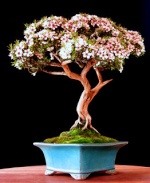
newzealandteatree- Member
 Re: Styling difficulty with Wild Olive
Re: Styling difficulty with Wild Olive
hi,
the beauty of using a tree that makes buds and branches everywhere is you can make the style you prefer from it. There is a perfect flat topped 'african' style tree here - using the right hand trunk only then flattening out and shaping the canopy. This style is not often seen in many bonsai collections in Europe/US but it is very natural to your continent.
if you want a stumpy fat olive with a mop of branches on top of course that is the easiest way to style them as many shoots will form after chopping the trunks short....but all bonsai styling is personal taste in the end as you will own and live with the tree so it needs to please you more than other people.
best wishes
Marcus
the beauty of using a tree that makes buds and branches everywhere is you can make the style you prefer from it. There is a perfect flat topped 'african' style tree here - using the right hand trunk only then flattening out and shaping the canopy. This style is not often seen in many bonsai collections in Europe/US but it is very natural to your continent.
if you want a stumpy fat olive with a mop of branches on top of course that is the easiest way to style them as many shoots will form after chopping the trunks short....but all bonsai styling is personal taste in the end as you will own and live with the tree so it needs to please you more than other people.
best wishes
Marcus

marcus watts- Member
 Re: Styling difficulty with Wild Olive
Re: Styling difficulty with Wild Olive
Thank you all for replies and tips on this olive tree. If I won't be able to attend the convention in 2013, I'll take to heart all your help and apply it to the Wild Olive. 
Happy growing to all

Happy growing to all

YukiShiro- Member
 Re: Styling difficulty with Wild Olive
Re: Styling difficulty with Wild Olive
I was reading this topic and all the photos that we saw are showing very old trees with huge trunks. I can tell you for sure that not all the olive trees are like this ( I live in Greece and I pass through these trees every day). Maybe after a few decades or hundreds of years, but then is not only the thickness of the trunk that makes a bonsai. So, looking more carefully on the last picture from Italy, just see the tree on the background and not the tree in the front. This is a very characteristic olive tree.
Your tree is not that old and my suggestion is to go towards the direction of a more naturalistic style like the tree in the background. Maybe you will need to keep only one of the trunks (the shorter at the right of your photo) and then just wire the branches. You can also go for twin trunk style as an alternative.
Your tree is not that old and my suggestion is to go towards the direction of a more naturalistic style like the tree in the background. Maybe you will need to keep only one of the trunks (the shorter at the right of your photo) and then just wire the branches. You can also go for twin trunk style as an alternative.
korf- Member
 Re: Styling difficulty with Wild Olive
Re: Styling difficulty with Wild Olive
This response is probably going to make me the most hated man on the IBC but here goes.
Naturalistic style, requires one to study at least 10 or 20 specimens of a mature tree or separately an old tree or separately a young tree, and using a drawing or photo or other, to pick out the best qualities of that tree type.
Eventually, all of these so-called natural styles will end up very much like the Japanese Classical shapes for their local trees.
Of course there will always be wild cards.
It is not a case of just growing something as a poorly designed, unappealing to the eye,effort or happy accident.
As we say in Fine Art -------- there is method to my madness.
So as the Olive goes, if the Africana can exist as the Europea does, fine, if not, then all you are doing is blindly copying.
Some research into the matter has to be done.
Naturalistic is the natural average shape of a given tree type.
Have fun.
Khaimraj
Naturalistic style, requires one to study at least 10 or 20 specimens of a mature tree or separately an old tree or separately a young tree, and using a drawing or photo or other, to pick out the best qualities of that tree type.
Eventually, all of these so-called natural styles will end up very much like the Japanese Classical shapes for their local trees.
Of course there will always be wild cards.
It is not a case of just growing something as a poorly designed, unappealing to the eye,effort or happy accident.
As we say in Fine Art -------- there is method to my madness.
So as the Olive goes, if the Africana can exist as the Europea does, fine, if not, then all you are doing is blindly copying.
Some research into the matter has to be done.
Naturalistic is the natural average shape of a given tree type.
Have fun.
Khaimraj

Khaimraj Seepersad- Member
 Re: Styling difficulty with Wild Olive
Re: Styling difficulty with Wild Olive
Dear korf, all the pictures/links quoted were merely a response to this request of Khaimrajkorf wrote:I was reading this topic and all the photos that we saw are showing very old trees with huge trunks. I can tell you for sure that not all the olive trees are like this ... ...
And consequently those pictures were not meant as a styling suggestion to YukiShiro.Khaimraj Seepersad wrote:Could someone please send a link to images of mature wild olive trees?
However, they can serve as study material in view of the naturalistic styling that you propose, cann't they? In the sense Khaimraj describes above, of course.

my nellie- Member
 Re: Styling difficulty with Wild Olive
Re: Styling difficulty with Wild Olive
Hello Alexandra,
I will not disagree with you. Certainly your photos are what Khaimraj was asking for and they can be a study for someone. On the other hand my reply was towards YukiShiro and a styling suggestion for her own tree. To me, her tree does not have the characteristics of the old and mature trees with the huge trunks.
I will not disagree with you. Certainly your photos are what Khaimraj was asking for and they can be a study for someone. On the other hand my reply was towards YukiShiro and a styling suggestion for her own tree. To me, her tree does not have the characteristics of the old and mature trees with the huge trunks.
korf- Member
 beautiful wild olive tree - new video by Graham Potter
beautiful wild olive tree - new video by Graham Potter
Last edited by YukiShiro on Thu Aug 02, 2012 6:56 am; edited 1 time in total (Reason for editing : wrong link for video)

YukiShiro- Member
 Re: Styling difficulty with Wild Olive
Re: Styling difficulty with Wild Olive
I have styled it a little more, created a jin with the one trunk. I need to do branch placing and decided to go with a windswept style. Will post photos soon 

YukiShiro- Member
 Re: Styling difficulty with Wild Olive
Re: Styling difficulty with Wild Olive
Outlandish indeed! Never take his advice. He sounds like a rebel and a renegade. Be careful he might get you ostracized from the worldwide bonsai community.Walter Pall wrote:
What an outlandish idea!
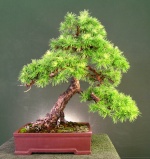
Twisted Trees- Member
 Re: Styling difficulty with Wild Olive
Re: Styling difficulty with Wild Olive
i shouldnt even comment...but i cant help it...first, let me say, somewhere along the line Walter's teachings on the subject of bonsai have influenced my own personal opinions of the art, so i am already entering this a little biased...also, this will be more of a rant, containing very little advice...so feel free to stop reading if that aint your thing...
now, im not important enough within the community to be ostracized, but, my goal is to become important enough to adventually one day become ostracized...why? well, because i dont agree with a lot of the so-called traditions, and, when a person stops questioning or pushing the envelope, learning and progress quickly decline...
ok...naturalistic...oh how i have come to despise that word...it is used now by some almost as an adjective to describe something within bonsai culture that doesnt fit the "rules"...or more accurately, something that doesnt fit our "idea" of what a bonsai should look like...maybe it doest have the perfect branch spacing, or its 3 inches taller than it "should" be, so people say say its styled naturalistic...i however would challenge that these "naturalistic" bonsai are actually much closer to traditional than what we consider as traditional today...we have all seen many trees that look like what we would call "messy" (for lack of a better word) but are obviousl well cared for...then the owner passes away or whatever and the tree changes hands and the new owner looks at it, declares that the tree needs to be re-styled (because it doesnt look like a "bonsai") and viola...the birth of an ordinary bonsai...i hate to say it, but a lot of times during the re-style, it seems like they style the character right out of it...and sure, it may look like a bonsai after the restyle, and all the branches will be perfectly spaced and blah blah blah, but it looses a part of its individuality in this process...i have no proof of this, but i think this has happened so many times that it has actually changed our conception of what bonsai is and should look like...then, when a tree comes around (like one of Walter's) everybody says "oh, thats naturalistic"...no...no...no...no...its a BONSAI...it looks "natural" BECAUSE it is a well styled bonsai...and, i argue, much closer to the art that emerged from Japan than most of what we see today...i know enough about japanese culture to know that there is great admiration in things imperfect...finding the perfection within nature which is always imperfect is very japanese...its very "zen" if you will (i dont like how that word is used these days either, but thats a whole seperate post)...
now, all of that probably sounds like i am slamming all other styles that arent "naturalistic"...please understand, that is not at all what i am doing...i actually quite love the look of a very stylized juniper with all kinds of carved deadwood...the constrast demonstrated in such a tree is very striking to me and i respect the art and horticulture behind it, and i personally see no problems with trees that are highly artistic or stylized...so, please, nobody take personal offense to anything i have said...my point i guess, is that this word "naturalistic" is getting a bit out of hand these days...almost like it is a sperate style or subculture of bonsai...i would bet that if we could travel back 600 years or so and look at the bonsai in japan they would all look "naturalistic"...rather than ostracizing (and i dont think many people here do, so im largely saying this to people who will probably never read this anyway)...we should thank voices like Walter's for reminding us of things that have been forgotten or never learned to begin with...
ok...rant over...sorry...but i feel better now...
oh...and to the original poster...that olive you came across...nice find indeed...thats going to look really nice, please keep us updated.
now, im not important enough within the community to be ostracized, but, my goal is to become important enough to adventually one day become ostracized...why? well, because i dont agree with a lot of the so-called traditions, and, when a person stops questioning or pushing the envelope, learning and progress quickly decline...
ok...naturalistic...oh how i have come to despise that word...it is used now by some almost as an adjective to describe something within bonsai culture that doesnt fit the "rules"...or more accurately, something that doesnt fit our "idea" of what a bonsai should look like...maybe it doest have the perfect branch spacing, or its 3 inches taller than it "should" be, so people say say its styled naturalistic...i however would challenge that these "naturalistic" bonsai are actually much closer to traditional than what we consider as traditional today...we have all seen many trees that look like what we would call "messy" (for lack of a better word) but are obviousl well cared for...then the owner passes away or whatever and the tree changes hands and the new owner looks at it, declares that the tree needs to be re-styled (because it doesnt look like a "bonsai") and viola...the birth of an ordinary bonsai...i hate to say it, but a lot of times during the re-style, it seems like they style the character right out of it...and sure, it may look like a bonsai after the restyle, and all the branches will be perfectly spaced and blah blah blah, but it looses a part of its individuality in this process...i have no proof of this, but i think this has happened so many times that it has actually changed our conception of what bonsai is and should look like...then, when a tree comes around (like one of Walter's) everybody says "oh, thats naturalistic"...no...no...no...no...its a BONSAI...it looks "natural" BECAUSE it is a well styled bonsai...and, i argue, much closer to the art that emerged from Japan than most of what we see today...i know enough about japanese culture to know that there is great admiration in things imperfect...finding the perfection within nature which is always imperfect is very japanese...its very "zen" if you will (i dont like how that word is used these days either, but thats a whole seperate post)...
now, all of that probably sounds like i am slamming all other styles that arent "naturalistic"...please understand, that is not at all what i am doing...i actually quite love the look of a very stylized juniper with all kinds of carved deadwood...the constrast demonstrated in such a tree is very striking to me and i respect the art and horticulture behind it, and i personally see no problems with trees that are highly artistic or stylized...so, please, nobody take personal offense to anything i have said...my point i guess, is that this word "naturalistic" is getting a bit out of hand these days...almost like it is a sperate style or subculture of bonsai...i would bet that if we could travel back 600 years or so and look at the bonsai in japan they would all look "naturalistic"...rather than ostracizing (and i dont think many people here do, so im largely saying this to people who will probably never read this anyway)...we should thank voices like Walter's for reminding us of things that have been forgotten or never learned to begin with...
ok...rant over...sorry...but i feel better now...
oh...and to the original poster...that olive you came across...nice find indeed...thats going to look really nice, please keep us updated.
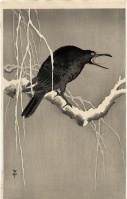
Just Mike- Member
 Re: Styling difficulty with Wild Olive
Re: Styling difficulty with Wild Olive
For my 2 cents, there is no such thing as a naturalistic style.
There is good material, mediocre material, and poor material.
There are superbly styled and finished trees, trees that are styled and finished to a mediocre standard and trees that are poorly styled and finished - irrespective of the quality of the starter material.
If you wander around looking at trees in the wild for long enoough, you will find that nature constantly finds ways of styling trees that often surprise us by their unnatural forms and there are examples of these in most species. If we designed these trees as bonsai, identically to the ones found in nature, nobody would call them naturalistic yet the design would be based on a design made by nature.
Some of the best bonsai look "natural" in that you barely notice the effects of the artists hands on the tree.
Naturalistic is just an excuse for not finishing bonsai designs to the highest standards or for poorly finished trees.
Walter can tell us that the Emperor is wearing the finest robes of silk as many times as he wants, but at the end of the day the Emperor will still be walking around in the altogether.
Just my opinion.
There is good material, mediocre material, and poor material.
There are superbly styled and finished trees, trees that are styled and finished to a mediocre standard and trees that are poorly styled and finished - irrespective of the quality of the starter material.
If you wander around looking at trees in the wild for long enoough, you will find that nature constantly finds ways of styling trees that often surprise us by their unnatural forms and there are examples of these in most species. If we designed these trees as bonsai, identically to the ones found in nature, nobody would call them naturalistic yet the design would be based on a design made by nature.
Some of the best bonsai look "natural" in that you barely notice the effects of the artists hands on the tree.
Naturalistic is just an excuse for not finishing bonsai designs to the highest standards or for poorly finished trees.
Walter can tell us that the Emperor is wearing the finest robes of silk as many times as he wants, but at the end of the day the Emperor will still be walking around in the altogether.
Just my opinion.
mambo- Member
 Re: Styling difficulty with Wild Olive
Re: Styling difficulty with Wild Olive
Just Mike wrote:i however would challenge that these "naturalistic" bonsai are actually much closer to traditional than what we consider as traditional today
Couldn't agree more Mike, I think that it was from a time when Japanese Bonsai still had the Chinese Penjing influence.
I look forward to seeing updated photos of the tree Yukishiro.
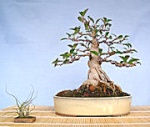
David Willoughby- Member
 Re: Styling difficulty with Wild Olive
Re: Styling difficulty with Wild Olive
Khaimraj Seepersad wrote:Could someone please send a link to images of mature wild olive trees?
Thus far all the images on Google, seem to be short and fat
Thanks in advance.
Khaimraj
Hi Khaimraj,
Here goes with a quick crash course on olives.
I believe that Spain has by far the best olive bonsai material in the world.
1. Very old (1000 years) olives. These are trees that were perhaps cultivated in the past or grew wild. They are characterized by gnarled trunks, often with multiple live veins.
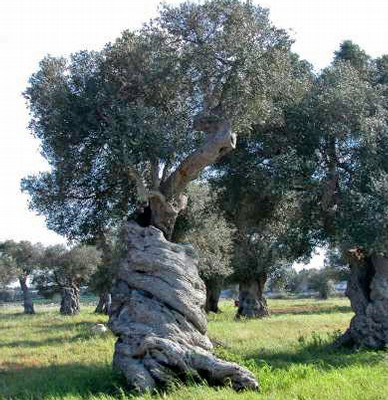


2. Wild olives, commonly known as acebuches. These are not cultivated but are often collected by bonsai artists as they are easy to collect and grow just about everywhere. I could walk out into just about anywhere in the countryside in Spain and find acceptable to good bonsai yamadori within an hour max. This is the natural growing style for mature solitary trees.
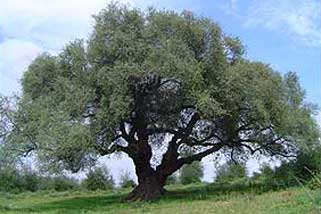
3. Cultivated olive trees. Over the last 20 years or so. Many of the old olives have been dug up, used as garden features and replaced by newer higher yielding varieties due to generous European Union subsidies.

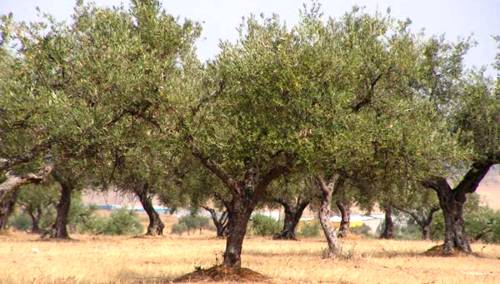
4. I left the best for last. These are the Mallorcan Olives, native to the Balearic Islands. They have been sculpted by nature for hundreds of years into living sculptures and make superb bonsai on a level with the Pemphis our Indonesian friends are so fortunate to be able to cultivate. Dead wood to die for, sinous live veins, amazing thick horny bark. They have it all.




As you can see, the natural style of the old olives is generally a canopy that reflects the dead areas of the trunk.
The wild olives tend to form a rounded canopy.
The Ullastre olives come in all shapes & sizes.
I'll be interested to see Walters "natural" creation..
I hope this helps.
By the way, my father is Guyanese!
Last edited by mambo on Wed Mar 06, 2013 10:10 am; edited 1 time in total
mambo- Member
 Re: Styling difficulty with Wild Olive
Re: Styling difficulty with Wild Olive
A lot of those pictured olives, while they are indeed amazing-powerful-awesome trees... have been styled to look like pine trees.
I strongly believe that styling your material to look like a pine tree, would most certainly NOT be considered a 'Naturalistic' styling choice for an olive bonsai.
I strongly believe that styling your material to look like a pine tree, would most certainly NOT be considered a 'Naturalistic' styling choice for an olive bonsai.
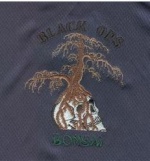
Auballagh- Member
 Re: Styling difficulty with Wild Olive
Re: Styling difficulty with Wild Olive
Mambo thanks for the images. [ got any Olea africana, it is the one that grows down here ]
As to the Naturalist argument, I can only say that I would like to believe that my trees are somewhat based on the shapes seen on this island.
On this island any damage to the bark will result in something trying to eat you, which is probably why on our cliffs there are no ancient, dwarfed examples.
So I try not to encourage holes or white wood.
I still have to balance from the interaction of the canopy [ positive space ] to the air around [ negative space ] and then harmonize that with the negative space in the holes of the canopy/domes [ the spaces for birds to pass through ]. I am using Oil painting and Sculpture techniques here as I was trained and then some.
So first you make it look good and then see what would make it better.
Many of the natural trees are not designs, but happy accidents and very unbalanced, but the normal eye would not see that. So who cares or why bother??
* a little note, the more balanced the branch taper to trunk size is, the less noticeable will be the size of the trunk.
Toothpick branches make large trunks look huge.
Happy Discussions.
Khaimraj
As to the Naturalist argument, I can only say that I would like to believe that my trees are somewhat based on the shapes seen on this island.
On this island any damage to the bark will result in something trying to eat you, which is probably why on our cliffs there are no ancient, dwarfed examples.
So I try not to encourage holes or white wood.
I still have to balance from the interaction of the canopy [ positive space ] to the air around [ negative space ] and then harmonize that with the negative space in the holes of the canopy/domes [ the spaces for birds to pass through ]. I am using Oil painting and Sculpture techniques here as I was trained and then some.
So first you make it look good and then see what would make it better.
Many of the natural trees are not designs, but happy accidents and very unbalanced, but the normal eye would not see that. So who cares or why bother??
* a little note, the more balanced the branch taper to trunk size is, the less noticeable will be the size of the trunk.
Toothpick branches make large trunks look huge.
Happy Discussions.
Khaimraj

Khaimraj Seepersad- Member
 Re: Styling difficulty with Wild Olive
Re: Styling difficulty with Wild Olive
update on my meagre knowledge of Olives.
africana is considered the subspecies of Olea europae, and not as I supposed the africana to be the parent of the europae
[ europea spelling ? ------- to tired to look it up.]
I see there is also a tropical olive -------------- hmm?
Later.
Apologies.
Khaimraj
africana is considered the subspecies of Olea europae, and not as I supposed the africana to be the parent of the europae
[ europea spelling ? ------- to tired to look it up.]
I see there is also a tropical olive -------------- hmm?
Later.
Apologies.
Khaimraj

Khaimraj Seepersad- Member
 Re: Styling difficulty with Wild Olive
Re: Styling difficulty with Wild Olive
Auballagh wrote:A lot of those pictured olives, while they are indeed amazing-powerful-awesome trees... have been styled to look like pine trees.
I strongly believe that styling your material to look like a pine tree, would most certainly NOT be considered a 'Naturalistic' styling choice for an olive bonsai.
Hi Auballagh,
If you read one of my earlier posts on this thread, I have stated that I do not believe there is any such thing as a naturalistic style and explained my own personal reasoning on this.
The posted photos were in response to the request earlier in the thread by Khaimraj.
Because of the conditions they grow in, the ullastre material you see shaped as bonsai, do lend themselves to the type of styling you refer to, because their natural habitat does not generally allow them to grow in the manner that normal olives grow.
See photo's below:


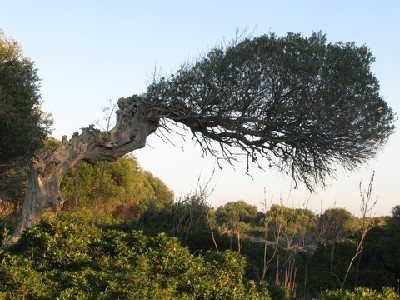
This one is just collected:

Would you put a natural olive canopy on this trunk?
If you want an olive to look natural, unless you have an absolutely incredible trunk (and even then the trunk wiill look better properly styled, you will make a pretty boring tree as you will have a broom shaped canopy.
mambo- Member
 Re: Styling difficulty with Wild Olive
Re: Styling difficulty with Wild Olive
Khaimraj Seepersad wrote:update on my meagre knowledge of Olives.
africana is considered the subspecies of Olea europae, and not as I supposed the africana to be the parent of the europae
[ europea spelling ? ------- to tired to look it up.]
I see there is also a tropical olive -------------- hmm?
Later.
Apologies.
Khaimraj
Guys the world is a pretty big place...there are up to date about 40 different Olives .
The edible olive is mere selected and hybrid plant, coming from the Wild olive, Olea europea var africana.

Andre Beaurain- Member
 Re: Styling difficulty with Wild Olive
Re: Styling difficulty with Wild Olive
...40 different WILD Olives....
there are hundreds of Olive varieties.
there are hundreds of Olive varieties.

Andre Beaurain- Member
 Re: Styling difficulty with Wild Olive
Re: Styling difficulty with Wild Olive
Hello Mambo. You point out some of the interesting diversity that occurs in broadleaf tree growth patterns. The pictures of the coastal wind beaten trees you provided are especially evocative of trees growing in harsh, coastal ocean climate regions. It’s quite evident that the direct exposure to incessant salt, wind and periodic storms have severely, directionally affected those broadleaf trees growing there! I also see in my own geographic region, that the Live Oak trees, Quercus virginiana growing wild along the coastal ocean areas, show remarkably the same effects as those depicted by the wild-growing olive trees in your attached photos. And, to my eye, none of those pictured, wind beaten, broadleaf trees growing along the ocean coast you provided, look like pine trees!
The ocean coast line is a very localized, quite narrow strip of geographic area. If you go inland less than a mile where I live, those very same ‘wind smashed’ Live Oak tree species found on the coastline will inevitably assume a more upright and radial spreading, ‘broom-like’ growth pattern where the growing conditions are less harsh and more protected. I agree that on an island, where there is more coastline and less protection for the trees, there will certainly be more visible wind affects occurring to the growth patterns of all the trees found there. But, for areas with more land mass, the really amazing-looking wind beaten trees are quite special, unique and rare when compared to the total numbers of those same tree species occurring naturally in that region.
The ocean coast line is a very localized, quite narrow strip of geographic area. If you go inland less than a mile where I live, those very same ‘wind smashed’ Live Oak tree species found on the coastline will inevitably assume a more upright and radial spreading, ‘broom-like’ growth pattern where the growing conditions are less harsh and more protected. I agree that on an island, where there is more coastline and less protection for the trees, there will certainly be more visible wind affects occurring to the growth patterns of all the trees found there. But, for areas with more land mass, the really amazing-looking wind beaten trees are quite special, unique and rare when compared to the total numbers of those same tree species occurring naturally in that region.

Auballagh- Member
 Re: Styling difficulty with Wild Olive
Re: Styling difficulty with Wild Olive
Auballagh wrote:Hello Mambo. And, to my eye, none of those pictured, wind beaten, broadleaf trees growing along the ocean coast you provided, look like pine trees!

This is why I argue that there is no such thing as a naturalistic style. Trees will adapt to the conditions they have to survive in so you will get olives that instead of having thick trunks with a broom shaped profile will have torouus shapes like pine trees. If you look for yamadori long enough, you will find that nature has shaped trees that defy logic for that particular species. So is a tree "natural" because you have styled it in a way that you found in nature or because it is the style that that particular tree would normally grow in?
mambo- Member
 Re: Styling difficulty with Wild Olive
Re: Styling difficulty with Wild Olive
Oh, I totally forgot to update, didn't even know it's still going with all the off-topic discussions in here...
Some, yes.
I have cut back the trunk on the right (first posted picture), and carved it, also carved a little on main trunk, just before it splits, I have thinned out foliage, and I'm planning to make it a windswept tree (sweeping in opposite direction of the right cut trunk). I am planning to shorten the very long trunk aswell.
Doesn't look like much now, but when I am closer to my goal, I will post photos again
Some, yes.
I have cut back the trunk on the right (first posted picture), and carved it, also carved a little on main trunk, just before it splits, I have thinned out foliage, and I'm planning to make it a windswept tree (sweeping in opposite direction of the right cut trunk). I am planning to shorten the very long trunk aswell.
Doesn't look like much now, but when I am closer to my goal, I will post photos again

YukiShiro- Member
Page 2 of 2 •  1, 2
1, 2
 Similar topics
Similar topics» First Styling wild olive
» Olive & Wild Olive light spots on leaves
» wild olive
» My trees.....Salva
» Wild olive
» Olive & Wild Olive light spots on leaves
» wild olive
» My trees.....Salva
» Wild olive
Page 2 of 2
Permissions in this forum:
You cannot reply to topics in this forum|
|
|







